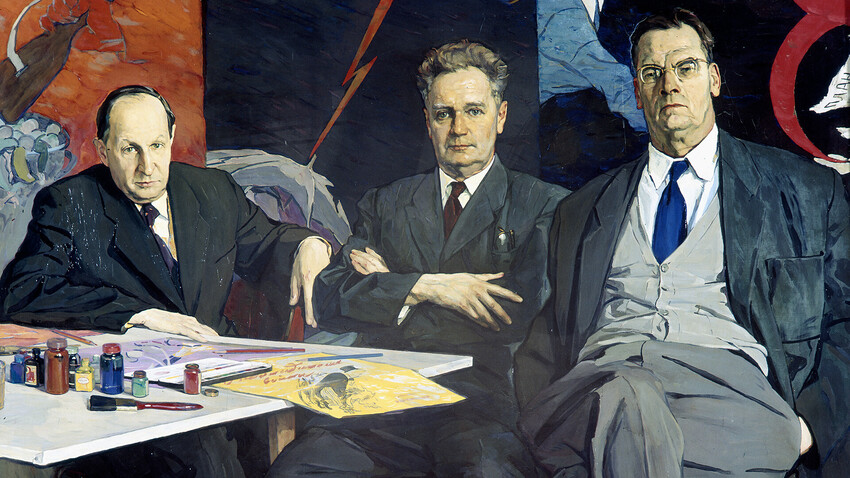
Viewers and readers are already amazed by any creative duo: how can two people work together? But to have three co-authors working on a project!? They spent more than 60 years side by side, until the death of one of them destroyed the union.
Young artists Mikhail Kupriyanov and Porfiry Krylov met in the early 1920s as students of the Higher Art and Technical Studios (Vkhutemas), the main proletarian forge of painters, sculptors and architects. Together, they began working in the local wall newspaper, signing their drawings with ‘KuKry’, the first letters of their last names, KUpriyanov and KRYlov.
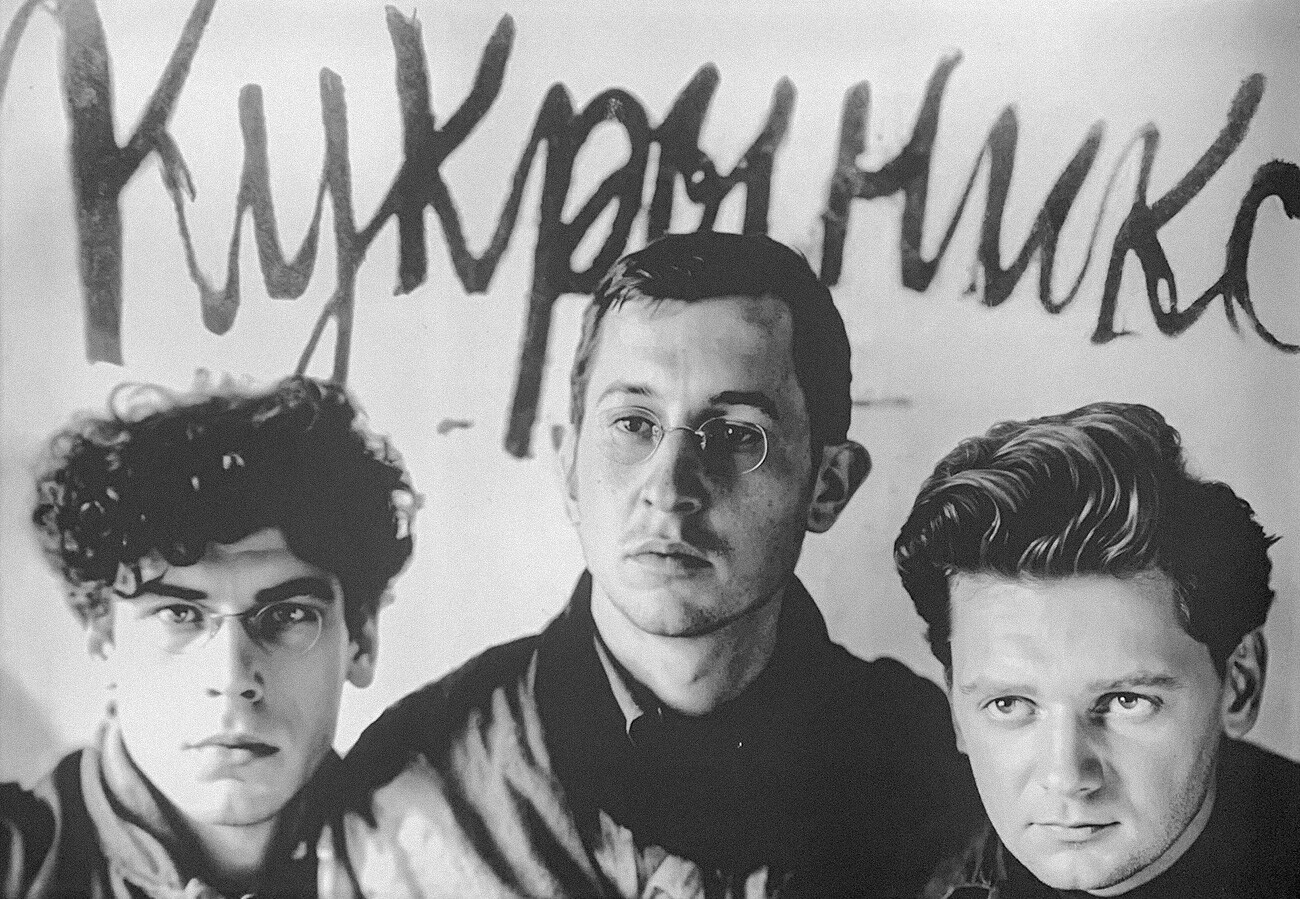
Pictured L-R: Mikhail Kupriyanov (1903—1991), Porfiry Krylov (1902—1990), Nikolai Sokolov (1903—2000).
Courtesy of ROSIZOIn 1924, Nikolai Sokolov joined their duo, who already had the creative pseudonym ‘Niks’. This is how the ‘KuKryNiksy’ came to be (‘-y’ at the end is the Russian form of implying plural).
The young artists immediately defined a common style and went beyond the student wall newspaper. The trio drew caricatures for the ‘Pravda’ newspaper and satirical magazines, such as ‘Krokodil’.
In the 1920s, their main work was caricatures on literary and cultural themes, everyday topics, as well as parody sketches of famous people.
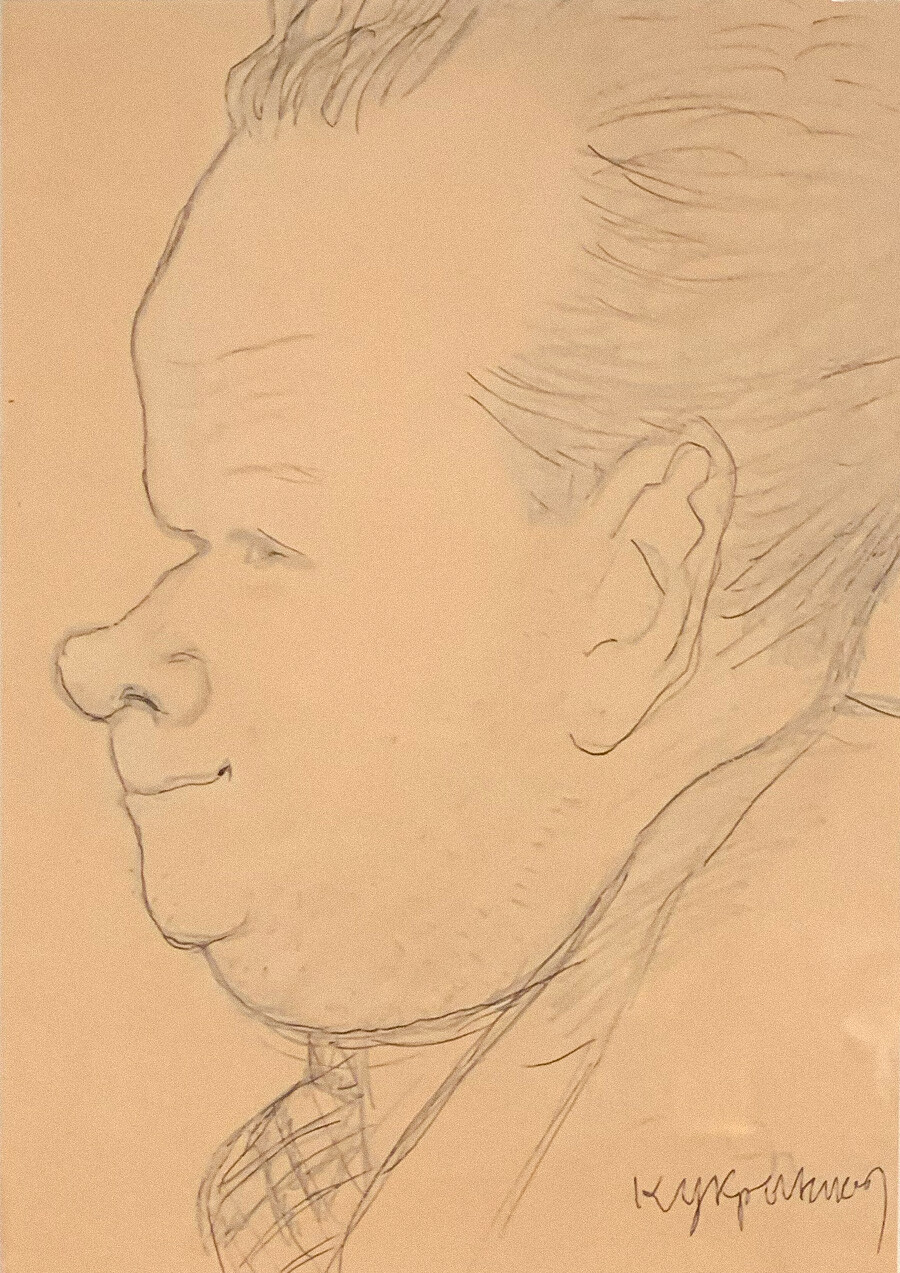
A caricature of director Sergei Eisenstein.
Courtesy of ROSIZO‘Kukryniksy’ also worked with the theater, trying their hand as costume designers and stage designers. In the mid-1930s, their series of friendly caricatures of directors Konstantin Stanislavsky and Vsevolod Meyerhold, composer Sergei Prokofiev and actors Vasily Kachalov and Ivan Moskvin were re-produced in porcelain. And they won a gold medal at the 1937 International Exhibition of Art and Technology in Paris.
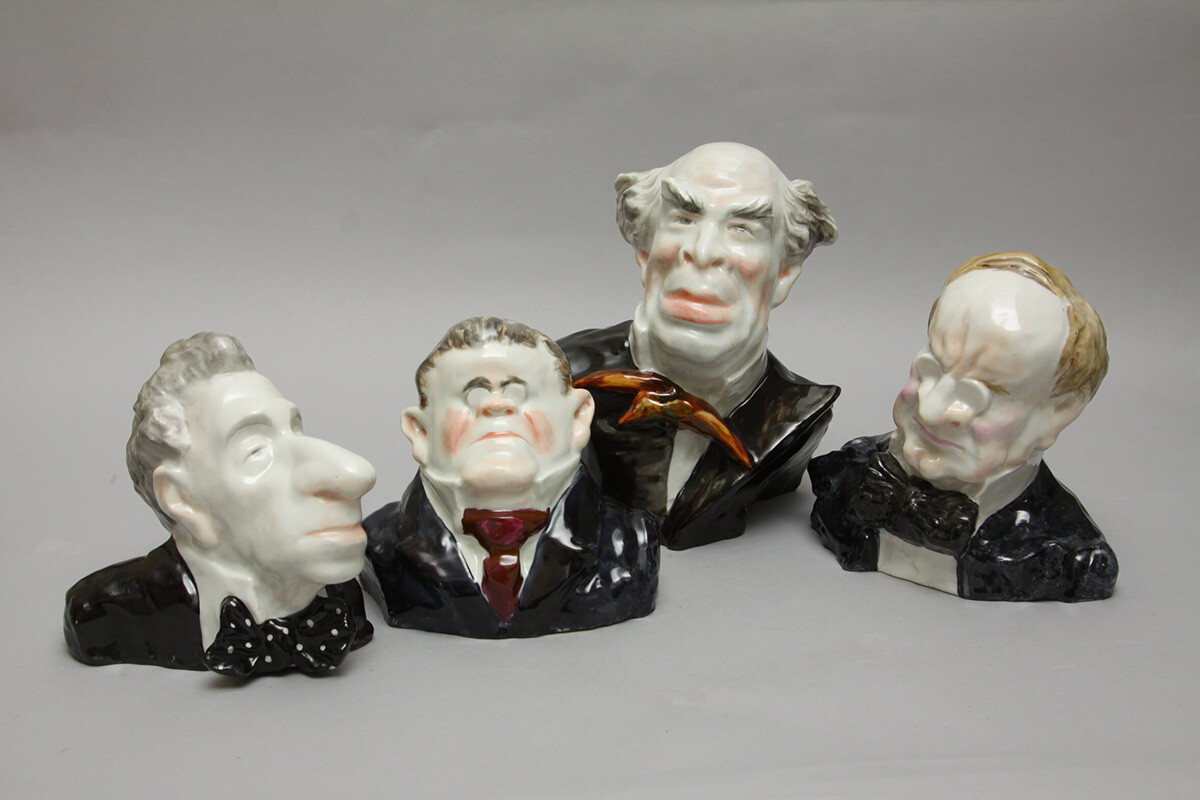
‘Kukryniks’ also practiced book illustration, in particular for satirical works by Nikolai Gogol, Mikhail Saltykov-Shchedrin and main Soviet writer Maxim Gorky.
It was Gorky who suggested witty humor for the direction of the trio, advising the other two to “look more often into Europe, across the ocean, beyond all our borders”. And from the early 1930s, the name ‘Kukryniksy’ became virtually synonymous with political cartoons.
Their main techniques were grotesque and hyperbole. They used vivid metaphors, endowed inanimate objects with human features and added animal elements to famous personalities. They worked for official propaganda, denouncing Stalin's political rivals, the Provisional Government and enemies of the revolution. The expressive style of the ‘Kukryniksy’ became very recognizable.
![‘Let’s destroy kulaks [rich peasants - RB] as a class’ (1930)](https://mf.b37mrtl.ru/rbthmedia/images/2024.11/original/672a2fbafd92ad2541597c21.jpg)
‘Let’s destroy kulaks [rich peasants - RB] as a class’ (1930)
State Historical MuseumThe artists' satire was directed at international politics and they were particularly fierce in their attacks on the Nazis during their rise to power and the international community's attempt to forge alliances with them.
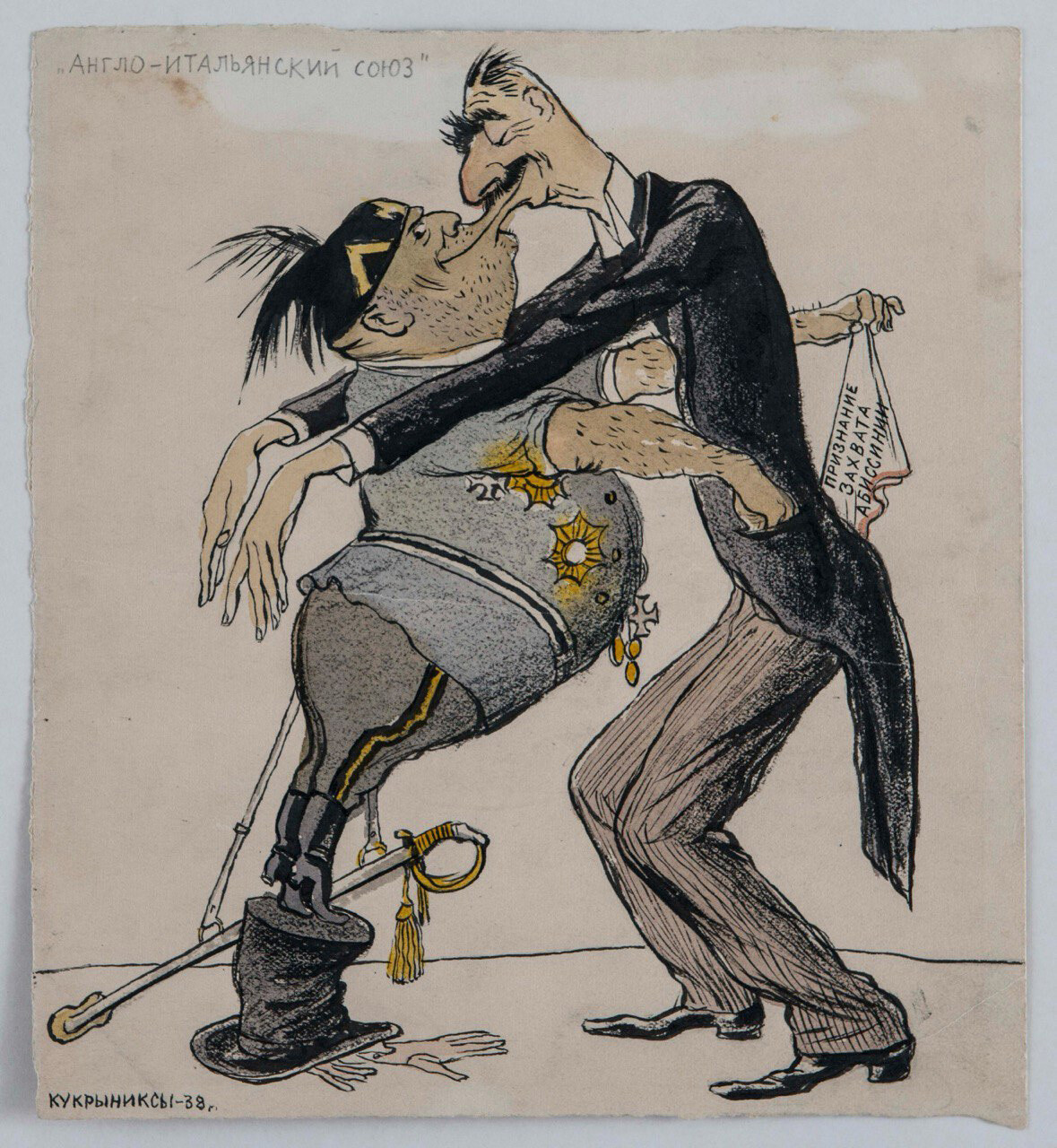
‘England-Italian alliance’ (1938-39)
Courtesy of ROSIZO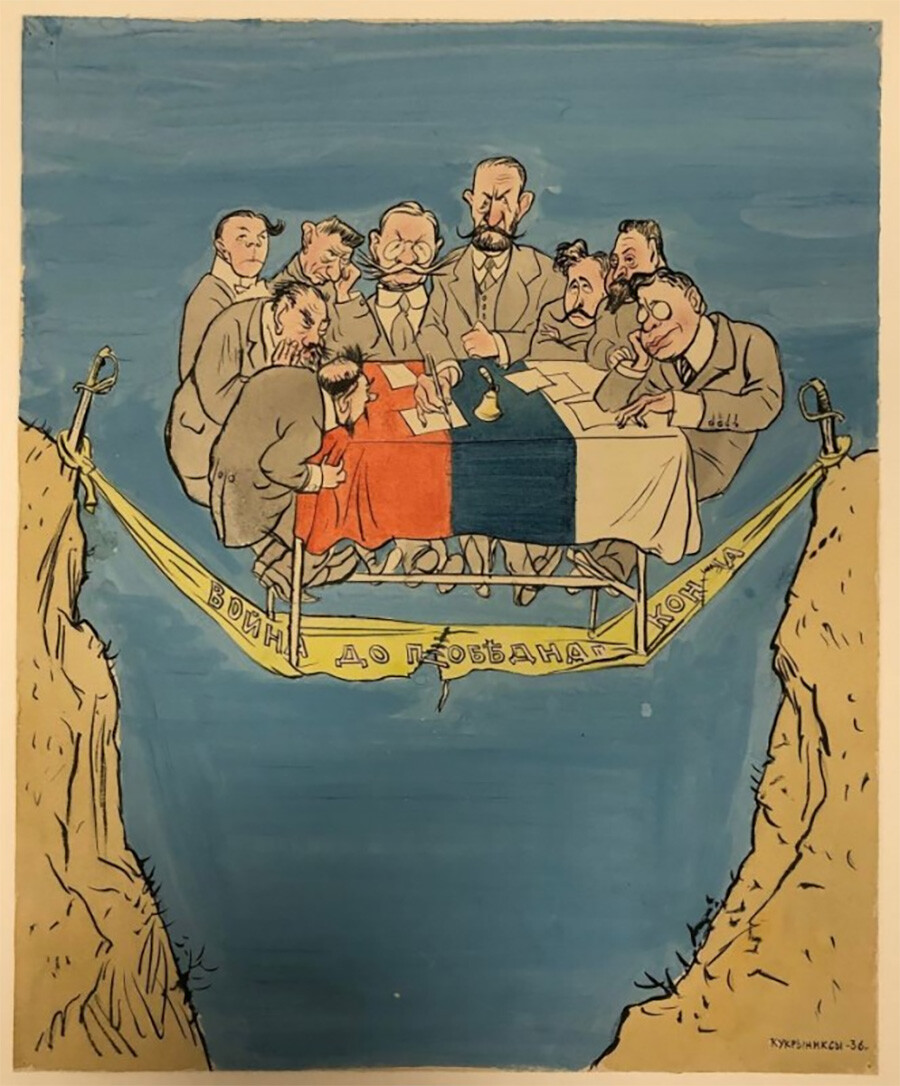
‘War until the bitter end’ (1936)
State Historical MuseumThe real peak of the artists’ fame came during World War II. By the evening of June 22, 1941, when Germany attacked the USSR, ‘Kukryniksy’ had created a sketch of the poster with the caption: “Ruthlessly defeat and destroy the enemy!” Already in two days, it appeared on the streets of many cities of the country.
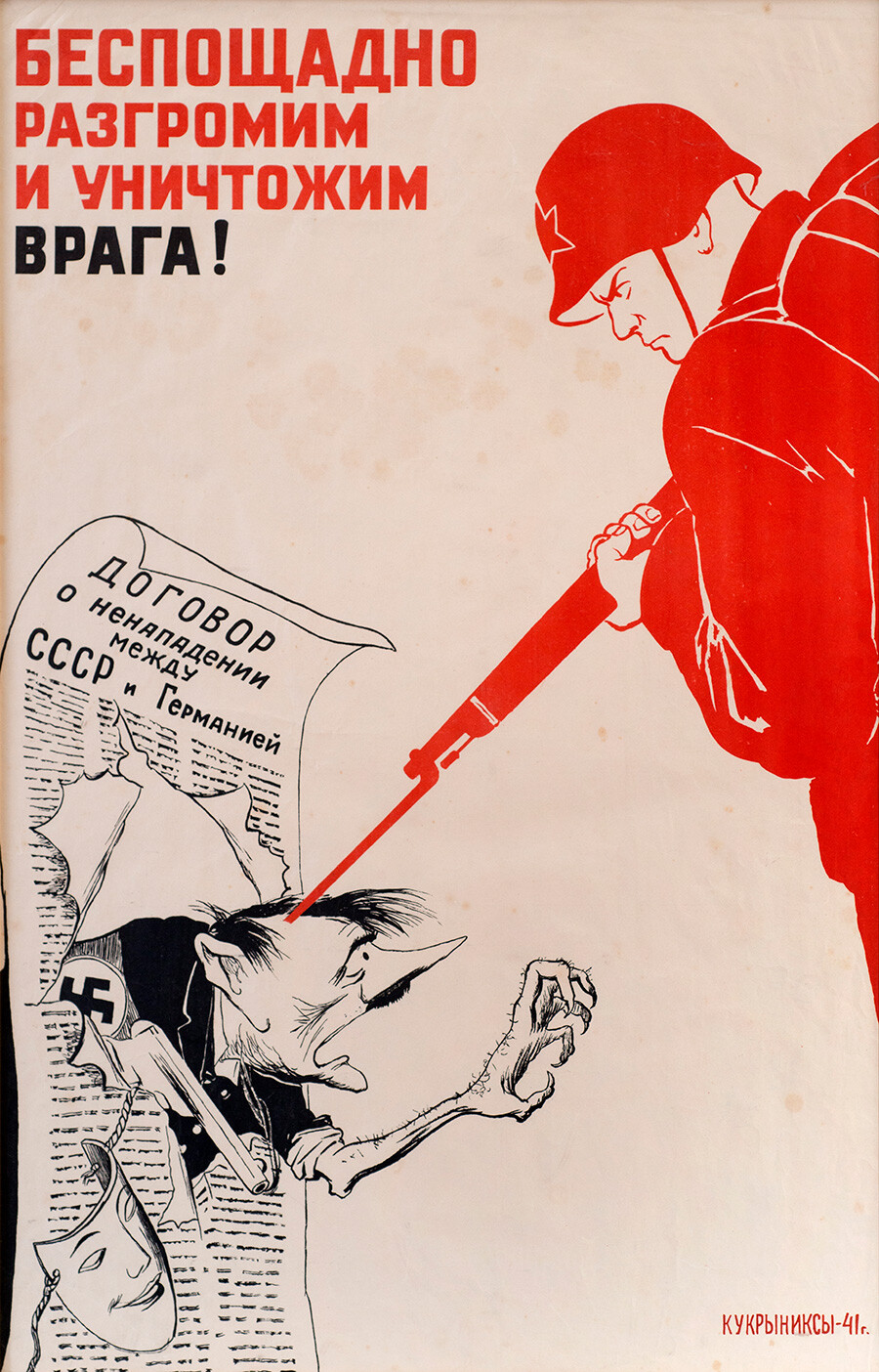
‘Ruthlessly defeat and destroy the enemy!’ (1941)
Courtesy of ROSIZO‘Kukryniks’ also supported the psychological mood of Soviet citizens and the fighting spirit of soldiers.

A ‘Krokodil’ magazine cover, 1942
Public domain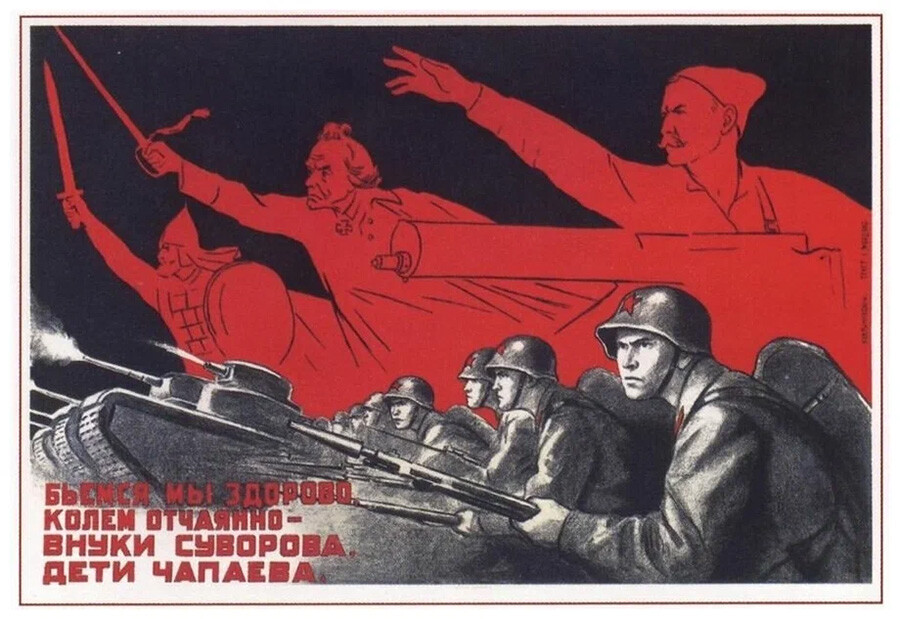
“We fight hard, we stab desperately, as Suvorov's grandchildren, Chapayev's children.” (1941)
Public domain
“The worth of debt is payment”, 1941
Courtesy of ROSIZOThroughout the war, the three artists drew dozens of posters and caricatures of Hitler and the German leadership, as well as Mussolini and other Nazi allies.
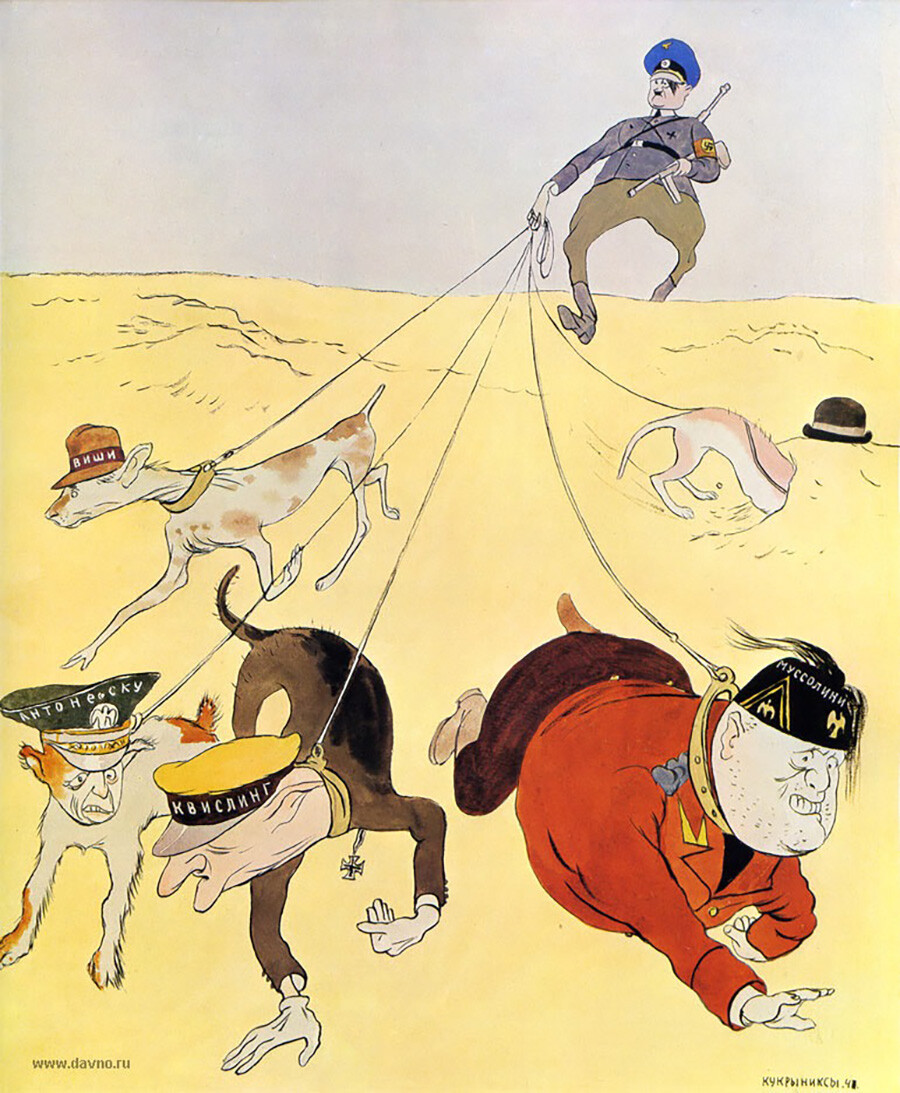
‘Conquerors bound by friendship’, 1941
State Russian MuseumThey also drew leaflets for German soldiers, calling on them to surrender. The impact of the cartoons was so great that the artists' names even appeared on Hitler's hit list.
After the war, ‘Kukryniksy’, together with poet Samuil Marshak, published a couple of books for children about the war, ‘Kaput’ and ‘History Lesson’.
The fame and prestige of the ‘Kukryniksy’ was so high after the war that the three of them were sent as journalists to the Nuremberg trials.
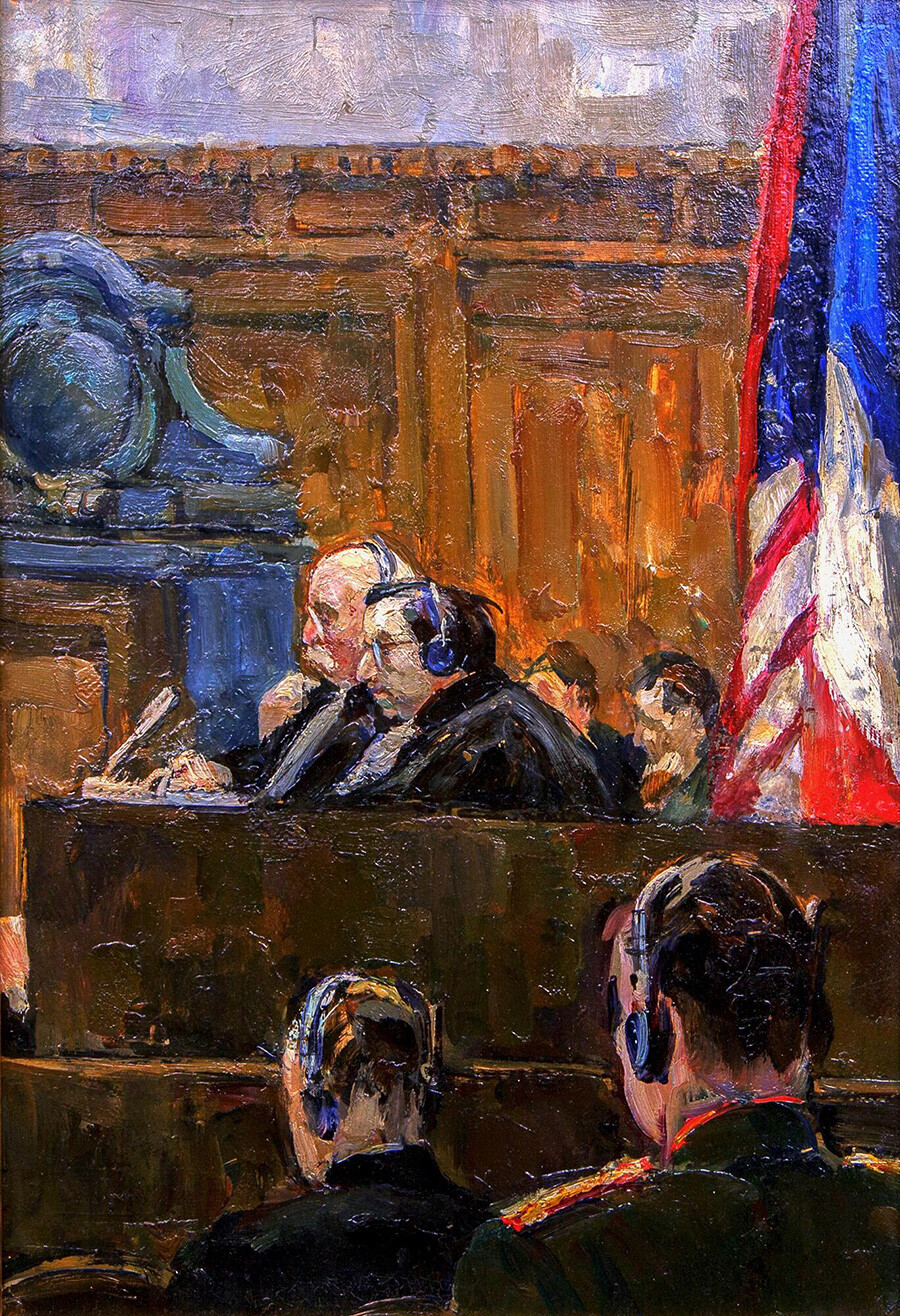
Porfiry Krylov ‘Nuremberg. Tribunal Box (Judges)’, 1945
Tula Museum of Fine ArtsMikhail Sokolov, the son of artist Nikolai Sokolov, recalled that the Soviet cartoonists' sketches from the trial were immediately published in newspapers (and not only Soviet ones) and that they were a great success. One of the American officers guarding the tribunal allegedly even offered to move ‘Kukryniksy’ closer to the defendants in exchange for their autograph.
After the process, ‘Kukryniksy’ painted a large-scale canvas titled: ‘Accusation. The Nuremberg Trials’.
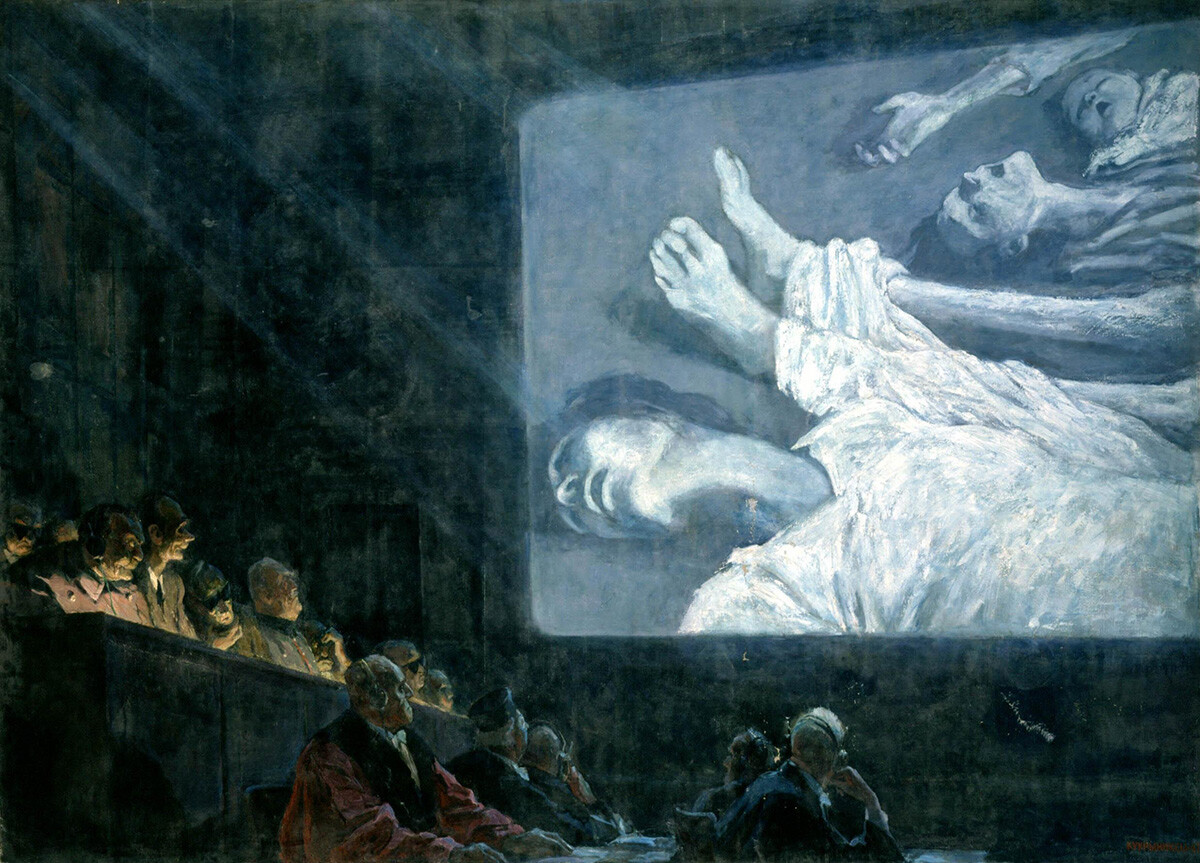
‘Accusation. The Nuremberg Trials’, 1967
State Russian MuseumThe artists had something to say even later. A series of their posters in the 1960s and 1970s were dedicated to the Cold War.
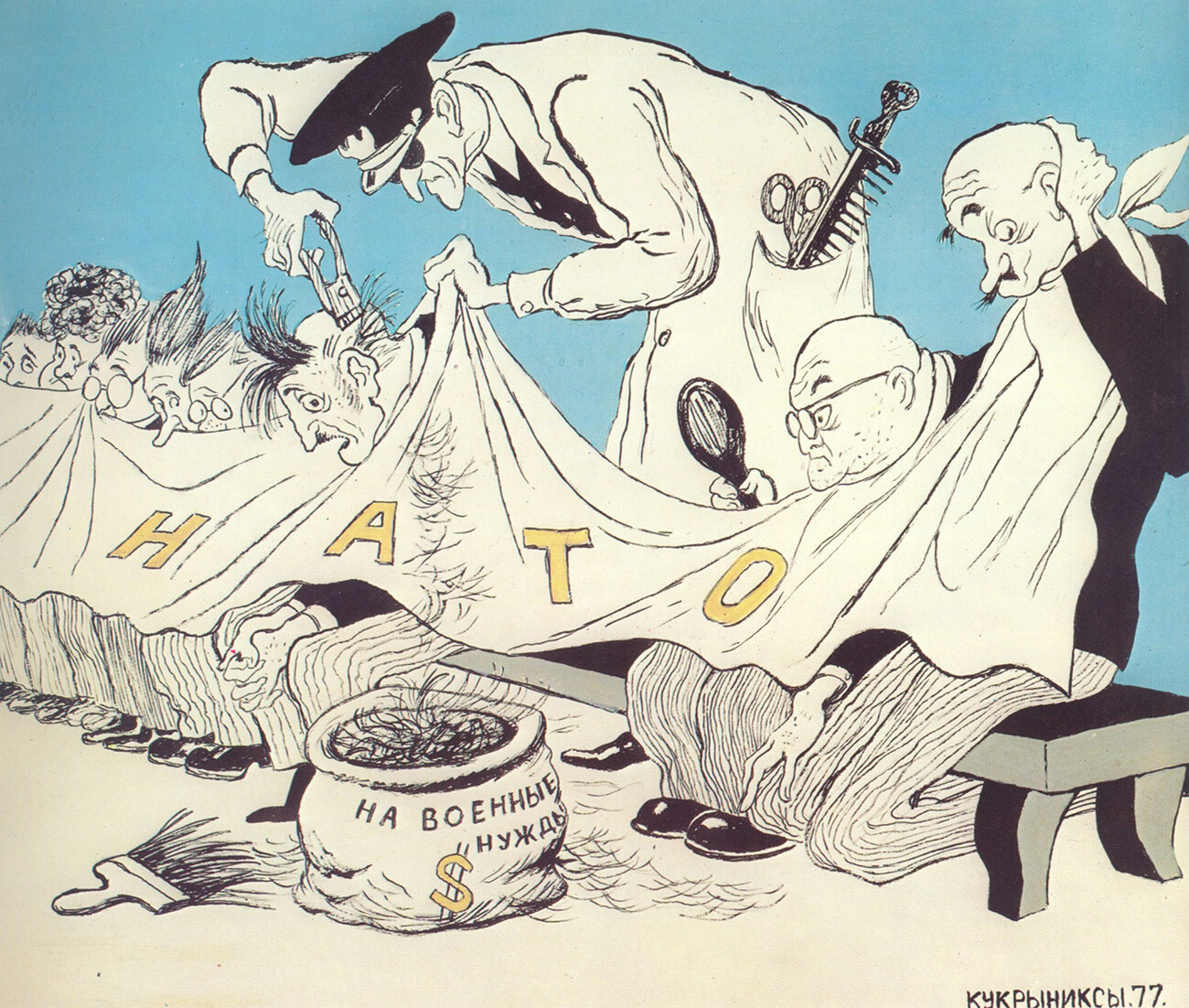
‘NATO. ‘Pentagoning’ everyone with the same shaver,’ 1977
Archive photo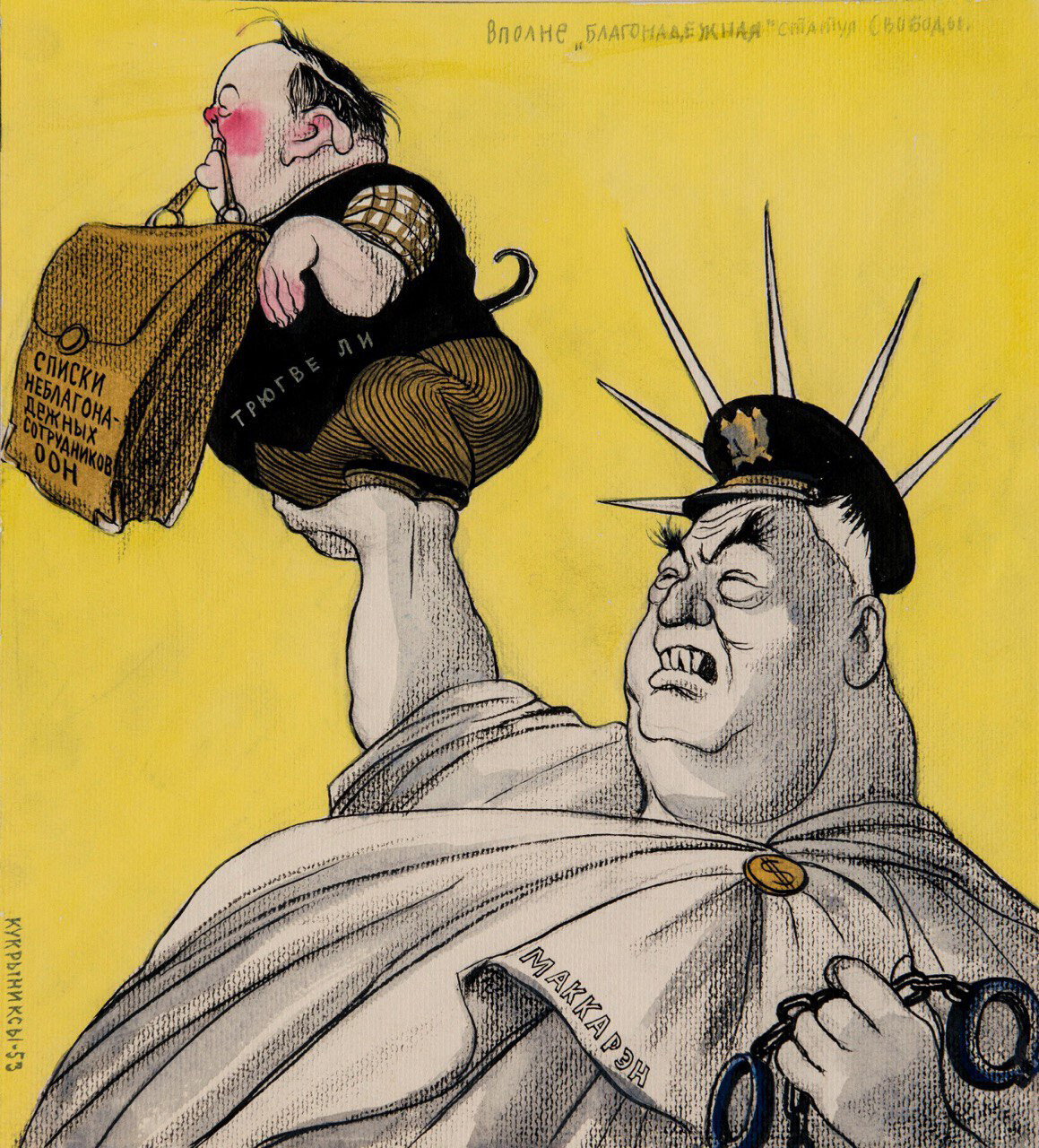
‘Trustworthy Statue of Liberty’ (Holding the then United Nations secretary-general Trygve Lie, who is holding a suitcase with the caption: 'lists of untrustworthy UN staff members’), 1953
Courtesy of ROSIZO“They always worked together. Literally. And, for 60 years, they never even quarreled once,” recalled Nikolai Sokolov’s son, Mikhail. By the way, the artists even lived in close proximity. All three of them were given apartments in the same house on Chkalovskaya Street in Moscow.
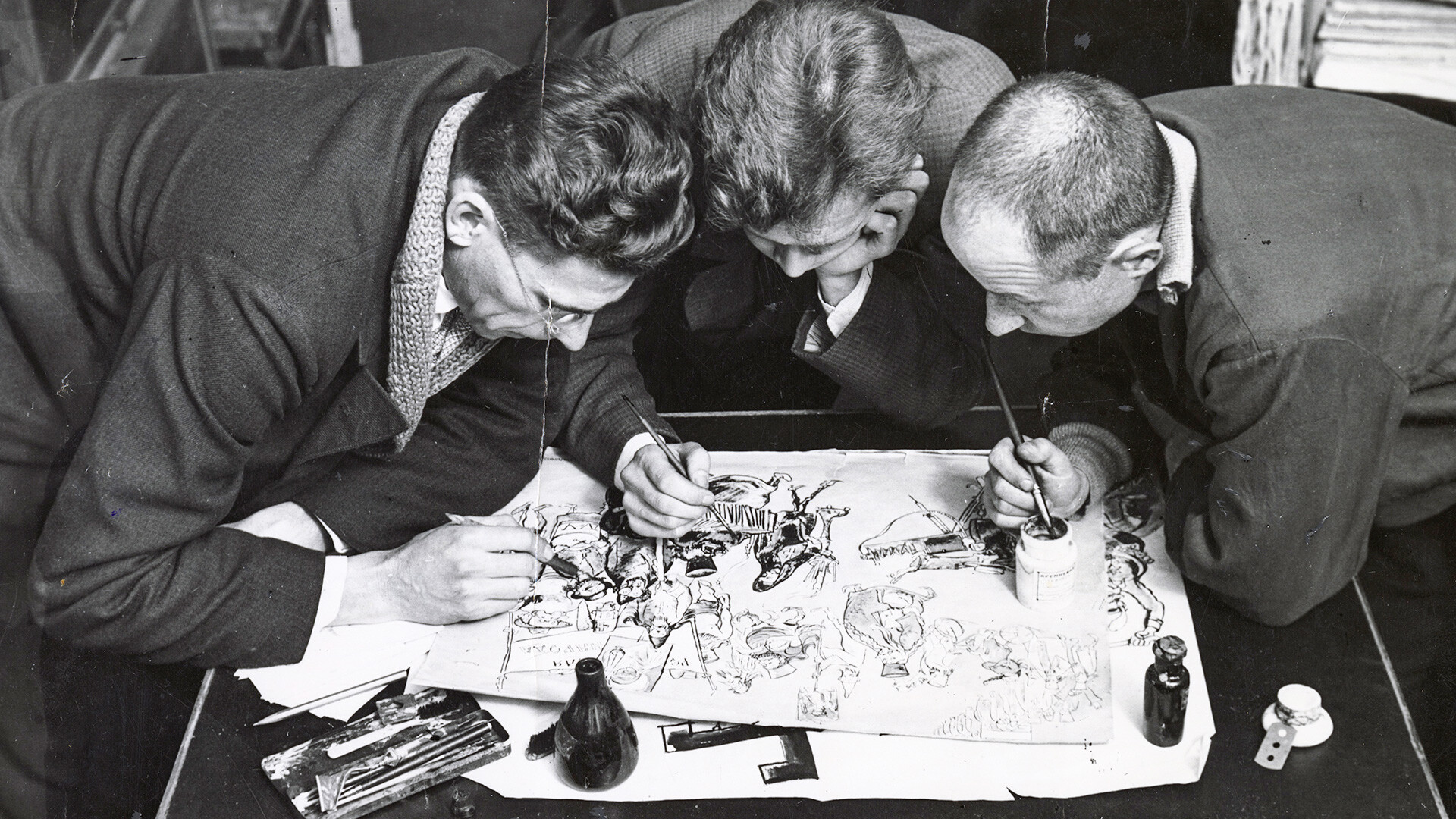
Kukryniksy in the studio, 1930s. Photo from the personal archive of N. Sokolov's family
Courtesy of ROSIZOIf the trio was commissioned to draw a cartoon on a certain topic, they went off in different directions and sketched separately. Then, together, they looked at what they had come up with and combined the best ideas into a single work. Almost all the works were drawn together, with each one responsible for a certain part.

‘The End’, 1963
State Russian Museum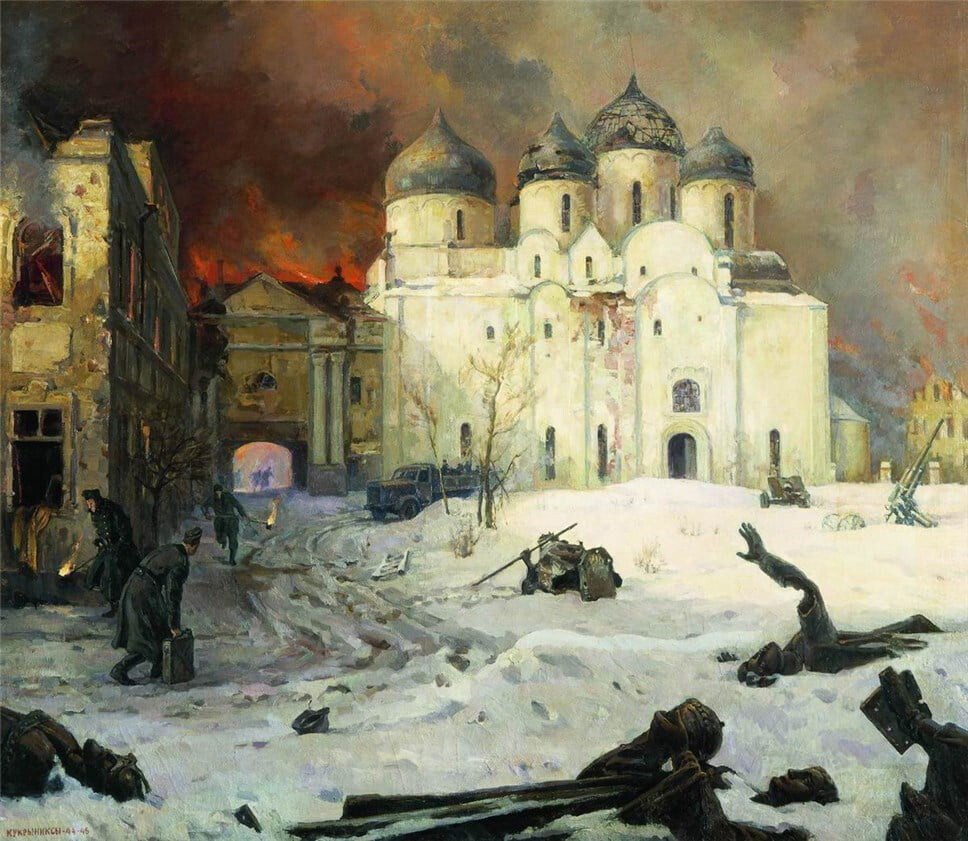
‘Fleeing of fascists from Novgorod’, 1944-1946
State Russian MuseumThey also worked separately from each other on realistic style canvases. They painted landscapes, portraits and urban scenes. However, the artists signed such paintings not with their collective pseudonym, but with their own names.

Mikhail Kupriyanov. ‘Moscow. Rain. Gorky Street’, the 1950s
Courtesy of ROSIZO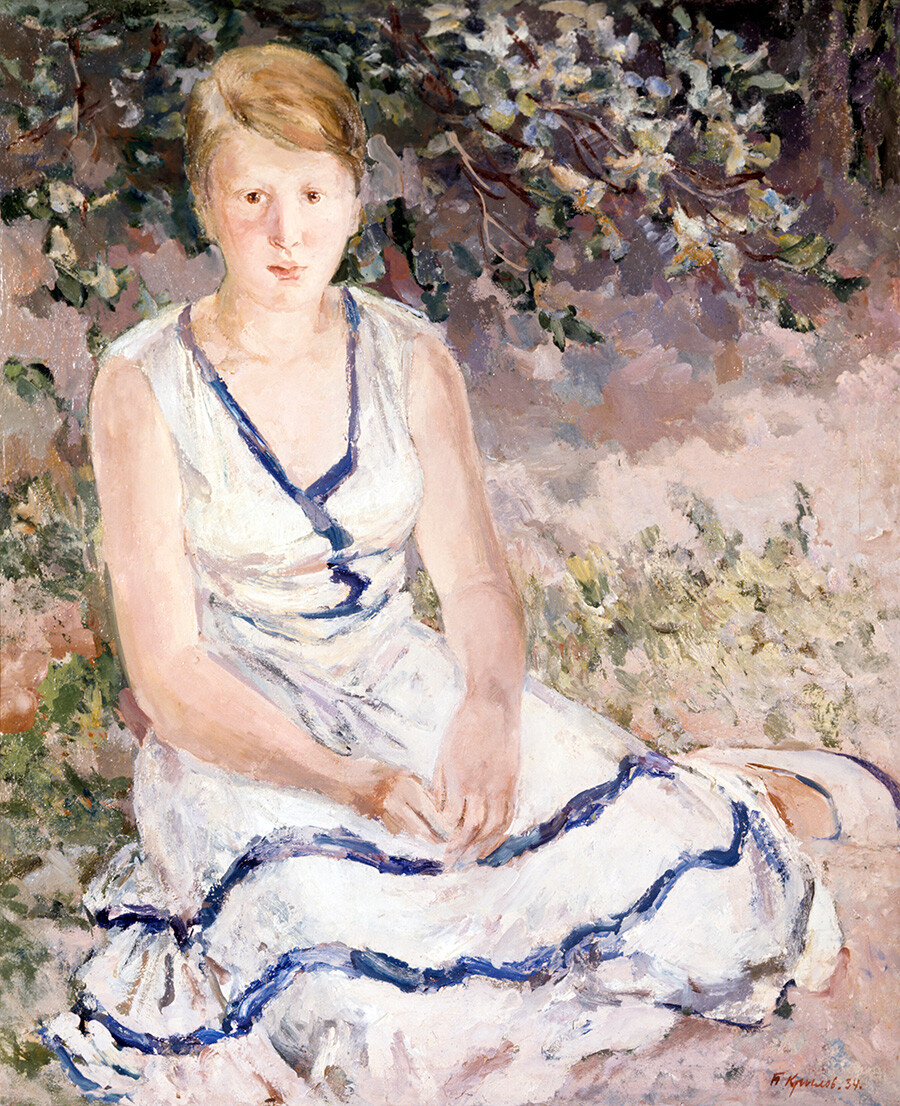
Porfiry Krylov. Portrait of Lena Kalacheva, 1972
Reproduction by E.Kogan/Sputnik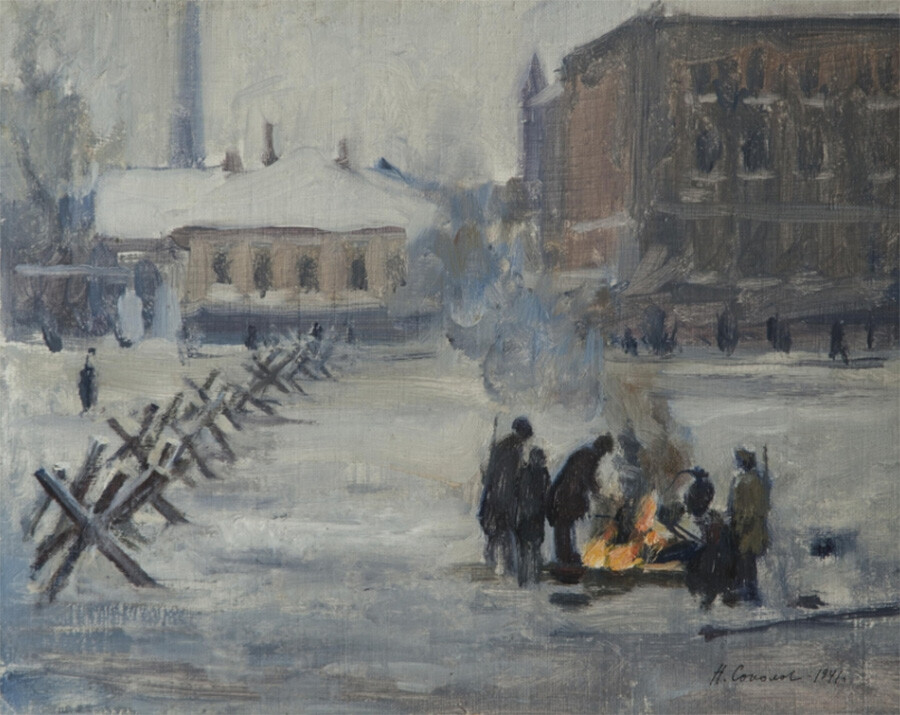
Nikolai Sokolov. ‘Moscow in October’, 1941
State Russian MuseumThe ROSIZO center’s ‘Kukryniksy' exhibition is on display at the Moscow Manege until December 15, 2024.
If using any of Russia Beyond's content, partly or in full, always provide an active hyperlink to the original material.
Subscribe
to our newsletter!
Get the week's best stories straight to your inbox